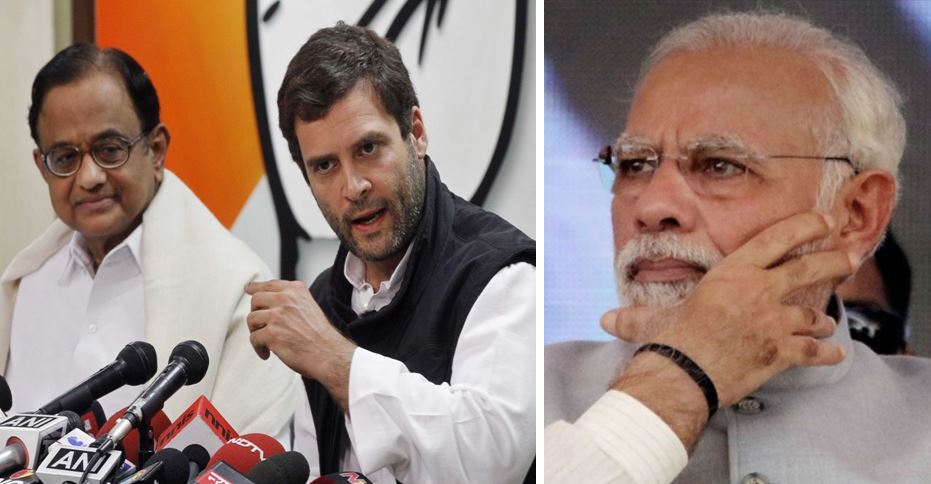Whenever there is an economic crisis, the global financial community finds itself divided into two groups- those who argue for a ramp up demand through distribution, or demand-side measures, and those who call for supply-side measures. The Coronavirus pandemic, although very different in nature from other financial crises of the past, has also divided the global financial community into demand-side advocates and supply-side advocates.
In India, too, the people in the opposition are arguing that the government just needs to print money and distribute cash to the poor, but this will, obviously, result in inflation- a permanent tax on poor people, as argued by Raghuram Rajan.
Congress leader Rahul Gandhi has said that the government should act like a ‘sahukar’ and dole out cash directly in the hands of the people. “I urge the government, do give loans to people, but not act like a ‘sahukar‘ to her children. Mother India should give money directly to her children as they need money now,” said Gandhi while interacting with journalists of regional media through video conferencing.
Economists on the left side of the political spectrum, right from Indian ones to American passport holding-Indian origin ones, argue that the government needs to distribute cash to ramp up demand. People like Pranab Bardhan and Abhijit Banerjee say that the government needs to spend at least 20 percent of the GDP to give money in the hands of the people.
The economists in the Modi government lean more on the supply side than demand. In the Economic Survey, Chief Economic Advisor K Subramanian argued that supply-side measures automatically ramp up demand as people earn money through employment, and the government does not need to create artificial demand through printing money and distributing it to the poor. He gave the example of East Asian economic which posted near double-digit growth and became middle to high-income countries within a generation by taking supply-side measures.
For a country like India, which has a young demography, and millions of people waiting to enter in job market, taking supply-side measures would not only ramp up demand but bring millions of people out of poverty.
Therefore, the government is taking supply-side measures through liquidity, laws, land, and labor reforms, as announced by Prime Minister on Tuesday this week. Moreover, in the Coronavirus, people in major cities where more than half of total demand lies, are still in lockdown, and therefore, as of now, any demand-side measure would be ineffective.
“#Ignorance is #Bliss: Economists still don’t get #Lockdown #Economics. As long as 60% of economy is in #Lockdown conventional fiscal stimulus has zero effect, 0. So anyone still talking about it, is either dumb, living in cloud cucko land or deliberately trying to fool the public,” tweeted Arvind Virmani, who was Chief Economic Advisor in Manmohan Singh government, and argued that any fiscal stimulus- demand-side measure- would prove ineffective as long as country does not opens up completely.
#Ignorance is #Bliss: Economists still don't get #Lockdown #Economics. As long as 60% of economy is in #Lockdown conventional fiscal stimulus has zero effect, 0. So anyone still talking about it, is either dumb, living in cloud cucko land or deliberately trying to fool th public
— Dr Arvind Virmani (Phd) (@dravirmani) May 17, 2020
The last time we dealt with such economic crisis was in 2008-09 financial crisis when Congress was in power. At that time, P Chidambaram was a finance minister and he announced first-ever large scale farm loan waiver for 3 crore small and marginal farmers, which cost around 60,000 crore rupees back then.
Moreover, the government increase spending through schemes like MGNREGA and took the fiscal deficit above 6 percent, the mandated ceiling under the FRBM act. The Congress-led UPA did not stop right there, it asked the PSUs to go with a blank cheque to industrialists and give credit of whatever amount they amount.
And what was the result of all these demand-side measures? The inflation crossed double-digit in the country and there were daily hue and cry about high onion and vegetable prices. Within the next few years, India was among the ‘fragile five’ economies of the world with a growth rate below 5 percent of NPA of 15-20 percent of total credit.
The macroeconomy was complete mess by 2012 and had a new government had come to power in 2014, India story was over. Therefore, the last time we dealt with crisis through demand-side measures, the macroeconomic measures were all unhealthy. This time, the Modi government is dealing with the crisis through supply-side measures and results are yet to be seen.
